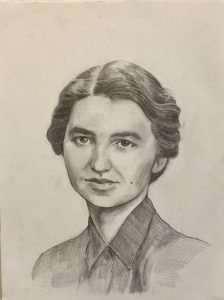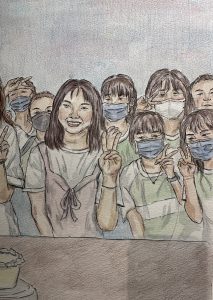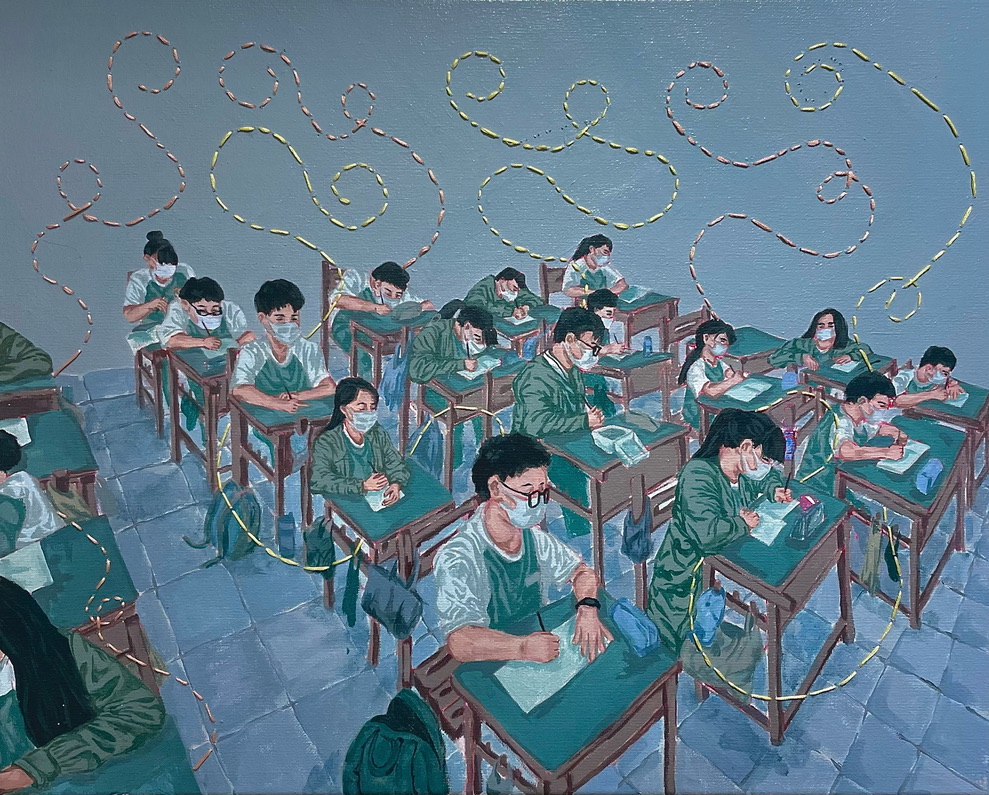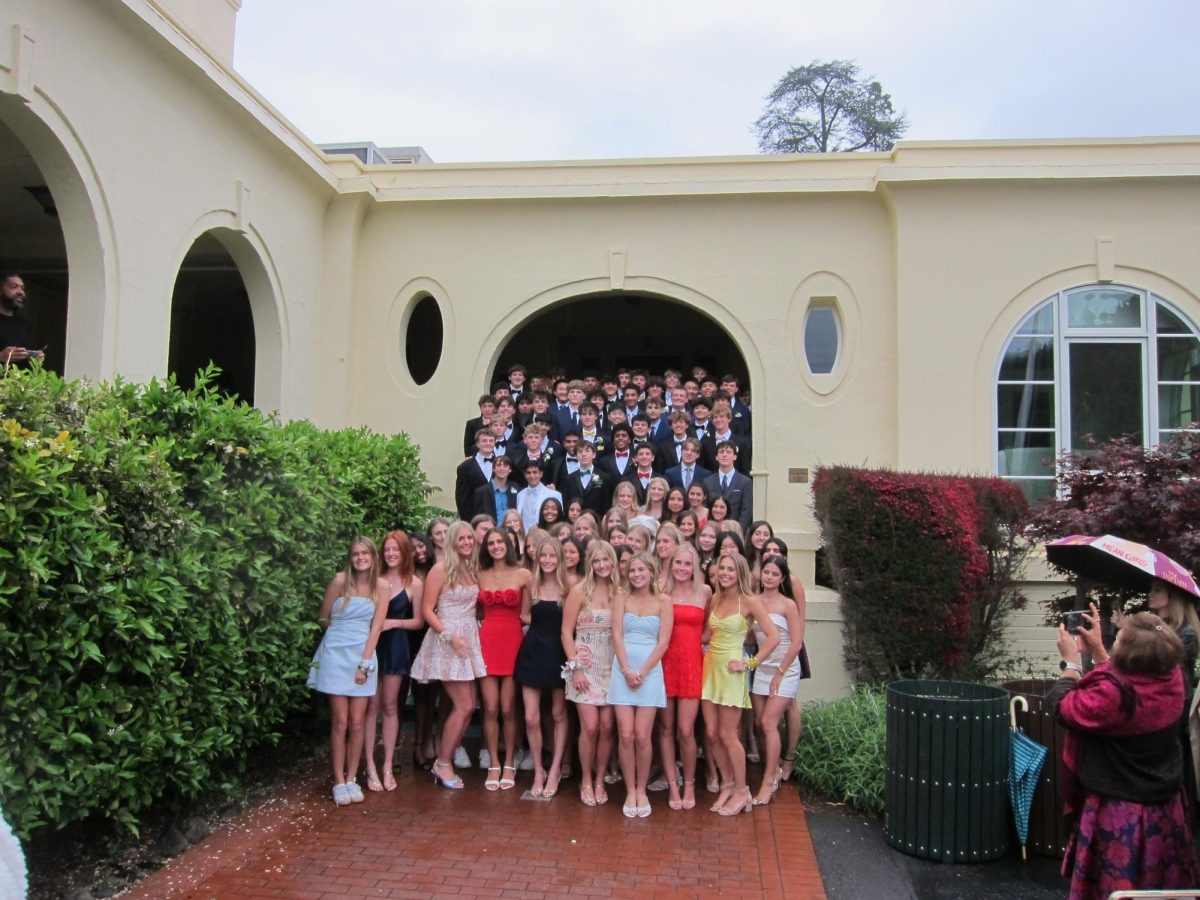Junior fellowships at Branson give students the opportunity to explore their passions while gaining knowledge and experience that will help them in the future. Carter West’s and Charlotte Ng’s fellowships inspired 14 pieces of art that graced the halls of New House.
West displayed 10 portraits of underrecognized women in history with incredible accomplishments. Her project first started with a biology class where she learned about scientist Rosalind Franklin.
Franklin was the first X-ray crystallographer to develop a picture of DNA’s double helix shape. However, her work was stolen and published by male scientists, James Watson and Francis Crick. They never credited Franklin despite relying heavily on her picture, Photo 51, for their research, which went on to win the Nobel Prize. Instead, she was mocked and described as jealous and incompetent.

West said that Franklin’s story made her and her classmates “absolutely infuriated on Rosalind Franklin’s behalf… I decided that I wanted to do something to honor Rosalind Franklin and other women like her.”
She designed a fellowship in which she would improve her technical skills at the Interlochen Academy of the Arts, in Michigan, and “create an installation of 10 portraits of influential, underrecognized women throughout history.” Alongside each portrait, West wrote a paragraph giving a brief history of the impact each woman had on the world.
West’s artistic process started with research and narrowing down the vast list of women who deserve recognition. She then searched for photos of the women, which would determine what medium she would use: old black-and-white photographs lent to graphite portraits while colored pictures of previous paintings favored watercolor or acrylic paint.
West’s work was also published in the Marin Independent Journal and installed in Branson’s New House gallery.
“I knew that it was something that was important to me and something I wanted to share, but I didn’t realize that there would be so many people who were actually really excited about it,” she said. “I got a lot of feedback from people … saying my work really meant a lot to them.”
While West’s fellowship stayed close to home, Ng’s took her all the way to Taiwan.
Ng had lived in Taiwan when she was in middle school, and visited last year as part of Branson’s study abroad program. In her experience of Taiwan, she observed a very strict academic culture, with grades being on public display and students going to cram school to study late into the night. She noticed that art was treated as more of a hobby and often not included in the school curriculum.

Ng’s fellowship, however, gave her the opportunity to teach art to first to sixth graders in an underprivileged region of Taiwan for three weeks during the summer. The school she taught at had a rigid educational structure that focused on scoring highly on the national college entrance exams. It made art a secondary discipline, so the students didn’t have time to do art during the school day.
“That really frustrated me,” said Ng. “Especially as a kid you need to express your emotions in some way … I wanted them to have an outlet.”
Ng believes art is important to teach because “reducing [expression] to a manageable scale of a paper in front of you … is very therapeutic and helps [kids] manage their emotions.”
The experience informed four pieces of Ng’s own art that joined West’s portraits in New House. One is a sculpture made from origami flowers that the kids made for Ng as a “thank you” for teaching them over the summer. They are put together in a little jar with paint brushes.
A second has a colorful string sewn into the canvas around a dull-colored painting of the kids writing to symbolize the “creativity that flows through [the students].” That piece took the longest to create, and Ng was very meticulous when planning and executing the work.
The third piece, a graphite drawing, is Ng’s personal favorite, based on a picture of her as a baby. She said being in Taiwan around the children brought out her own inner child and she felt “more loose in [her] paint strokes, but also in general as a person.”
Ng also felt that when making this piece she was “doing that expression [she] was trying to teach the kids.”

The last piece is a watercolor painting focusing on the kids’ faces, “to center them and the identities of the people.” Ng said, “That really mattered to me, and so that last one is just to show who they are.”
Both artists greatly enjoyed their fellowships and presented beautiful work and encourage taking advantage of the opportunity.
“If you’re interested in doing a fellowship you should really do it because this will be one of my most memorable experiences at Branson,” Ng said.



